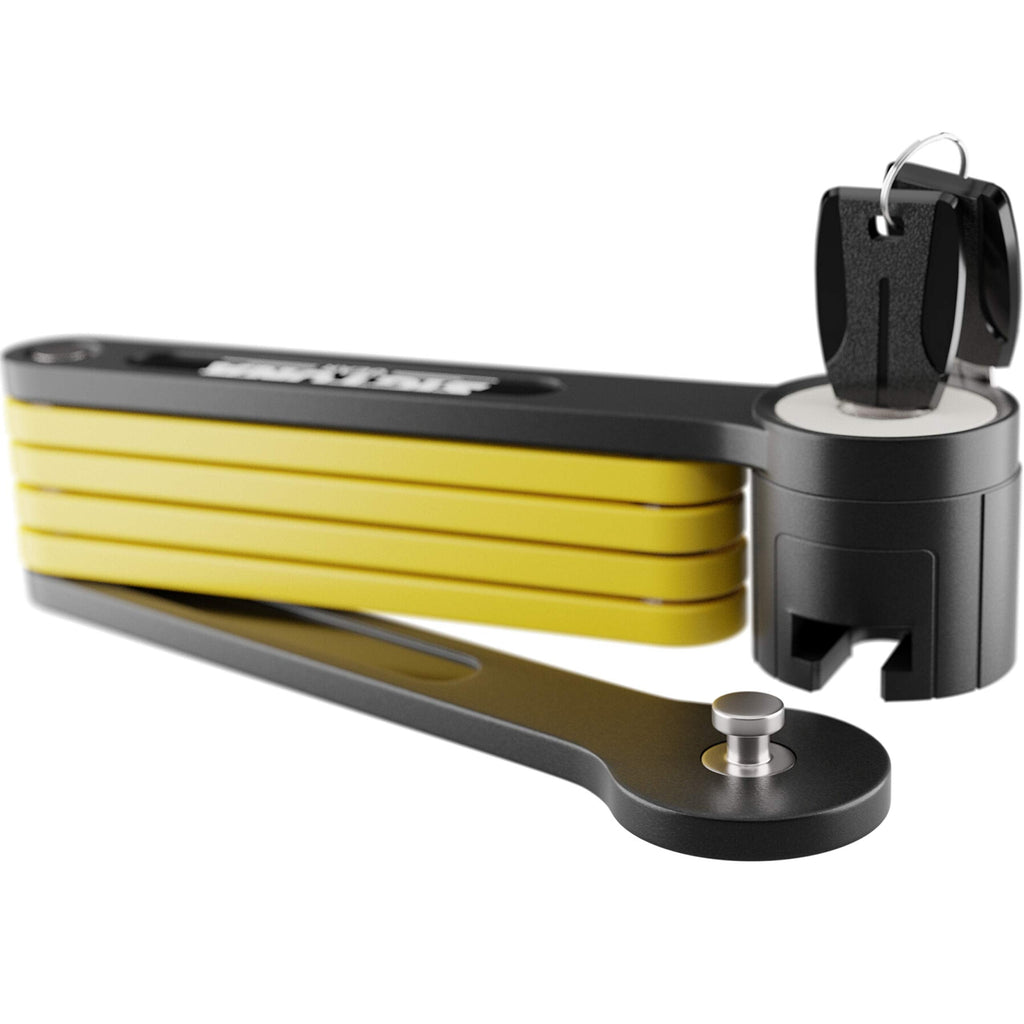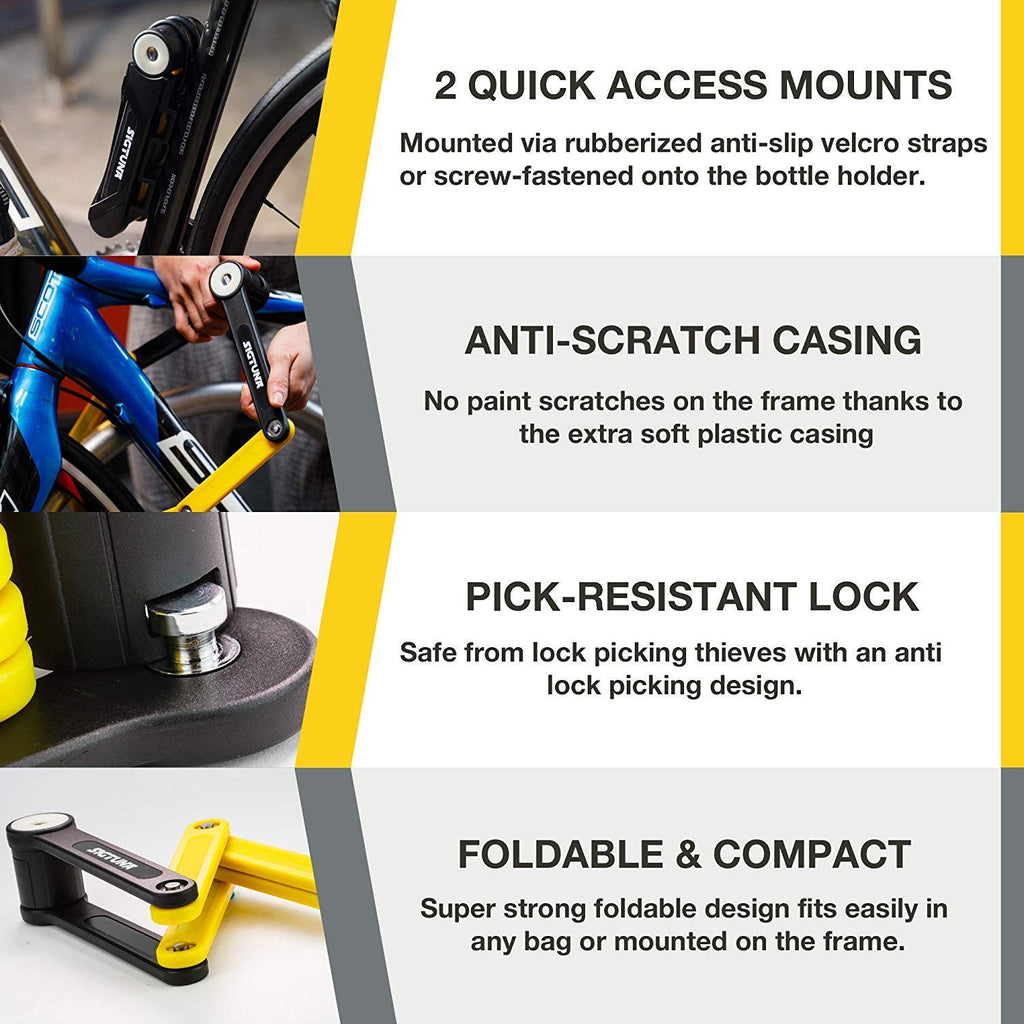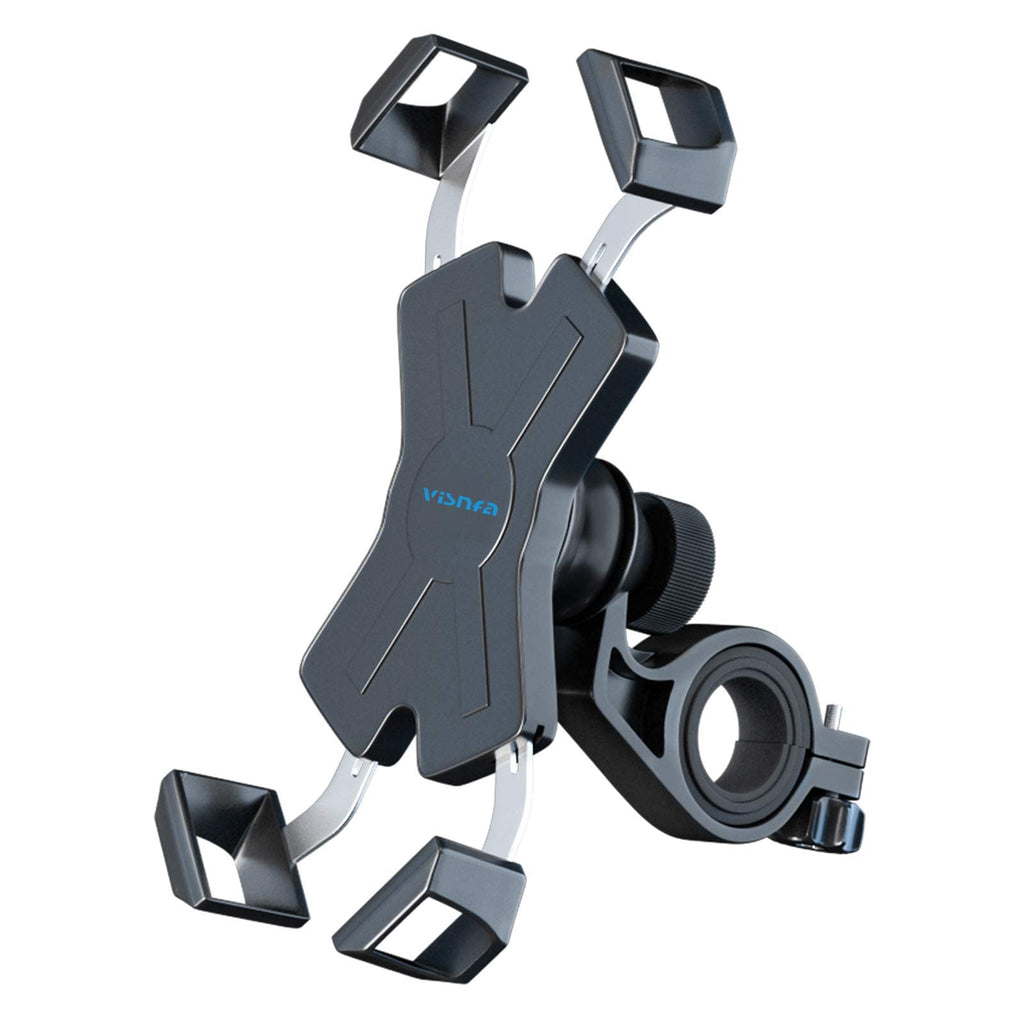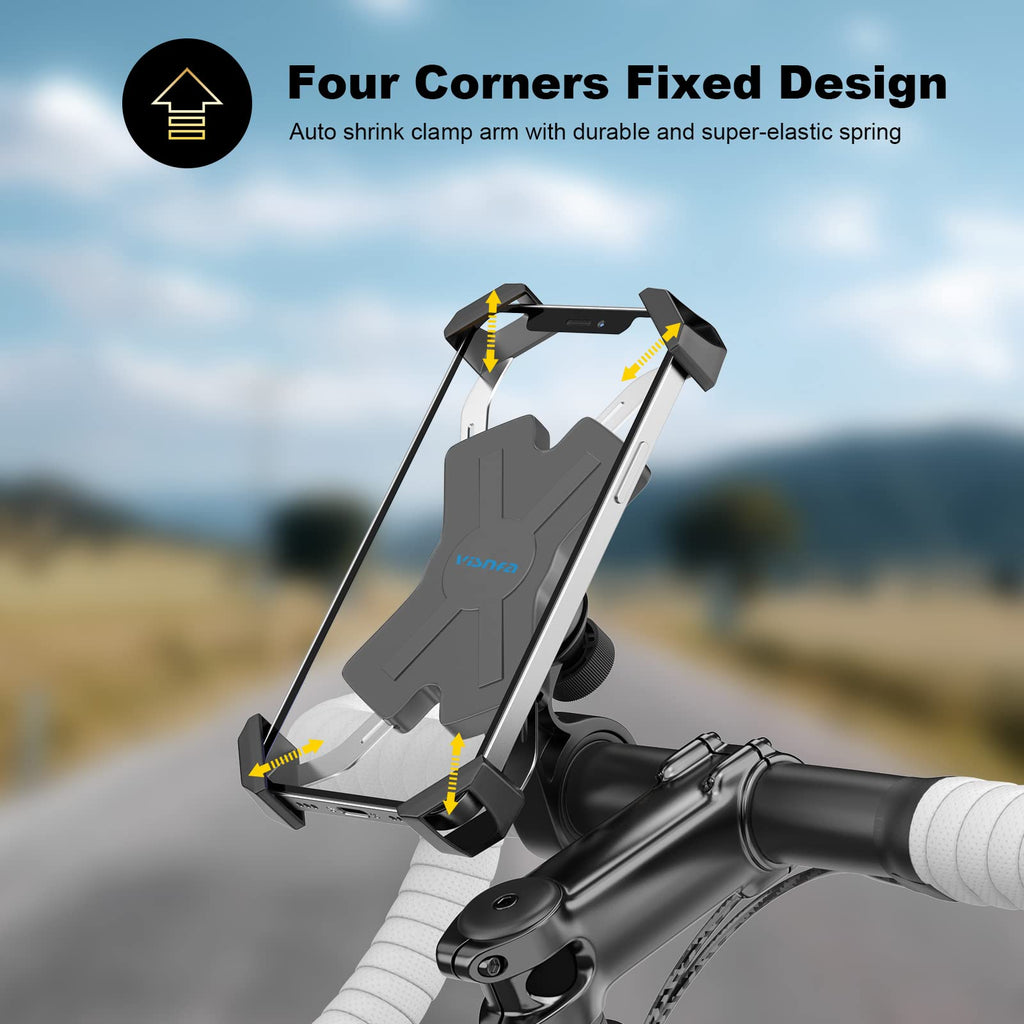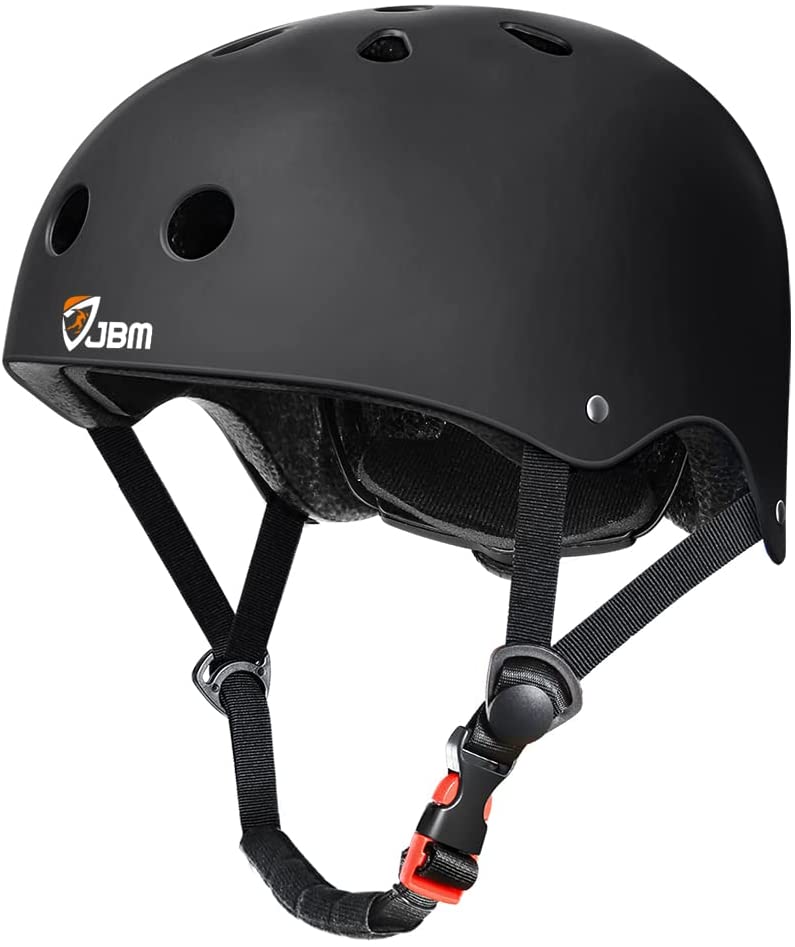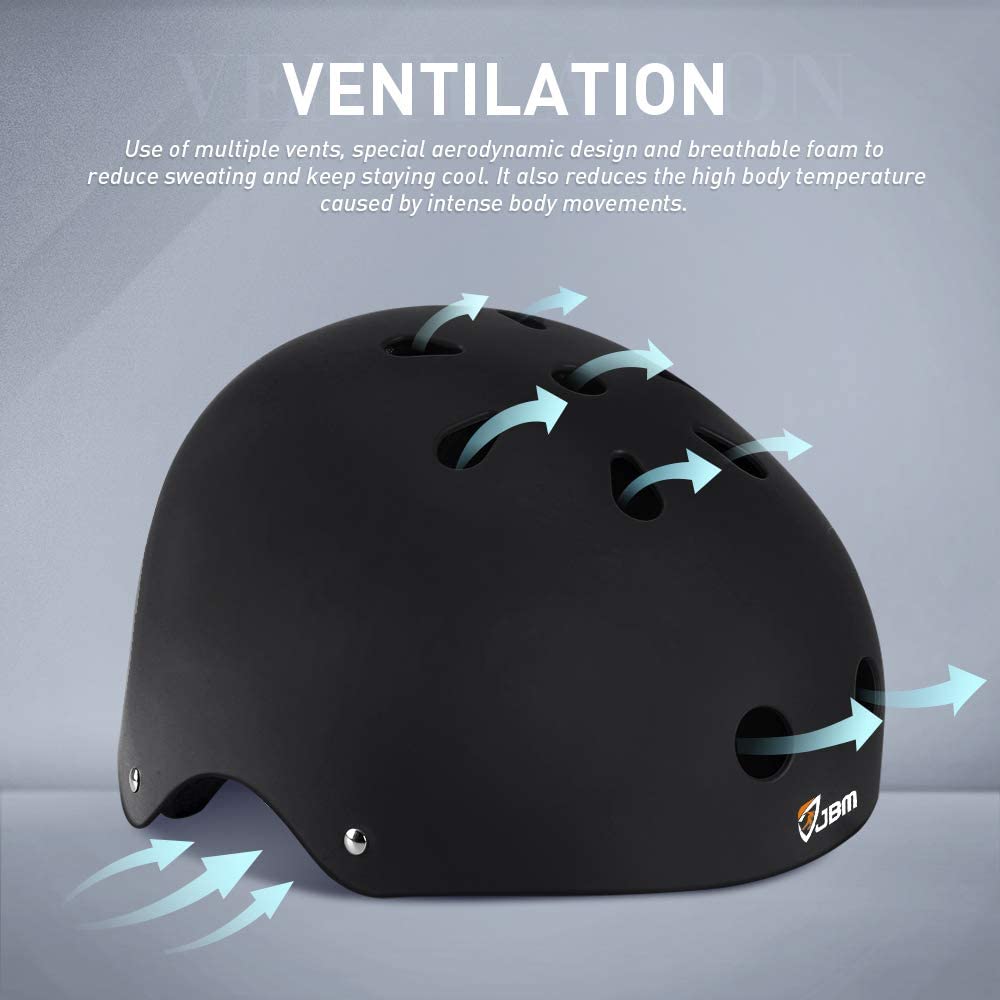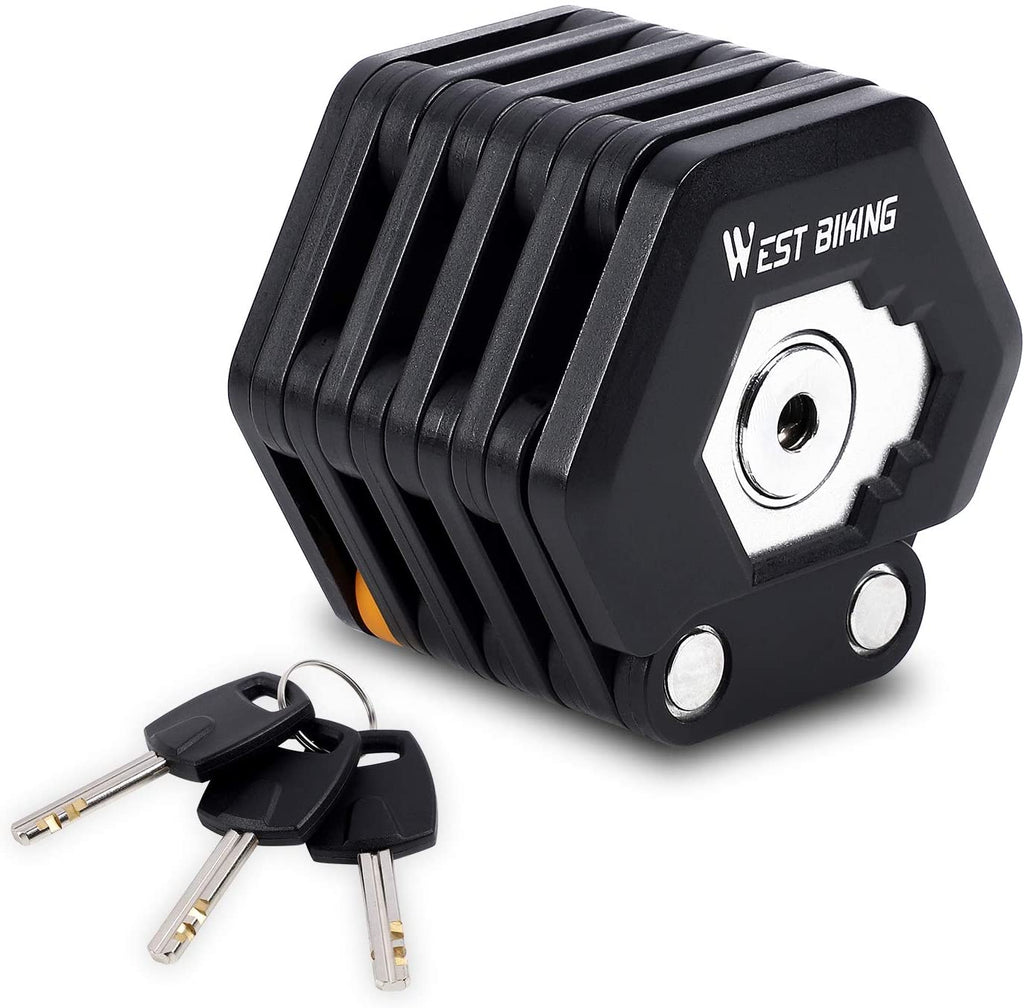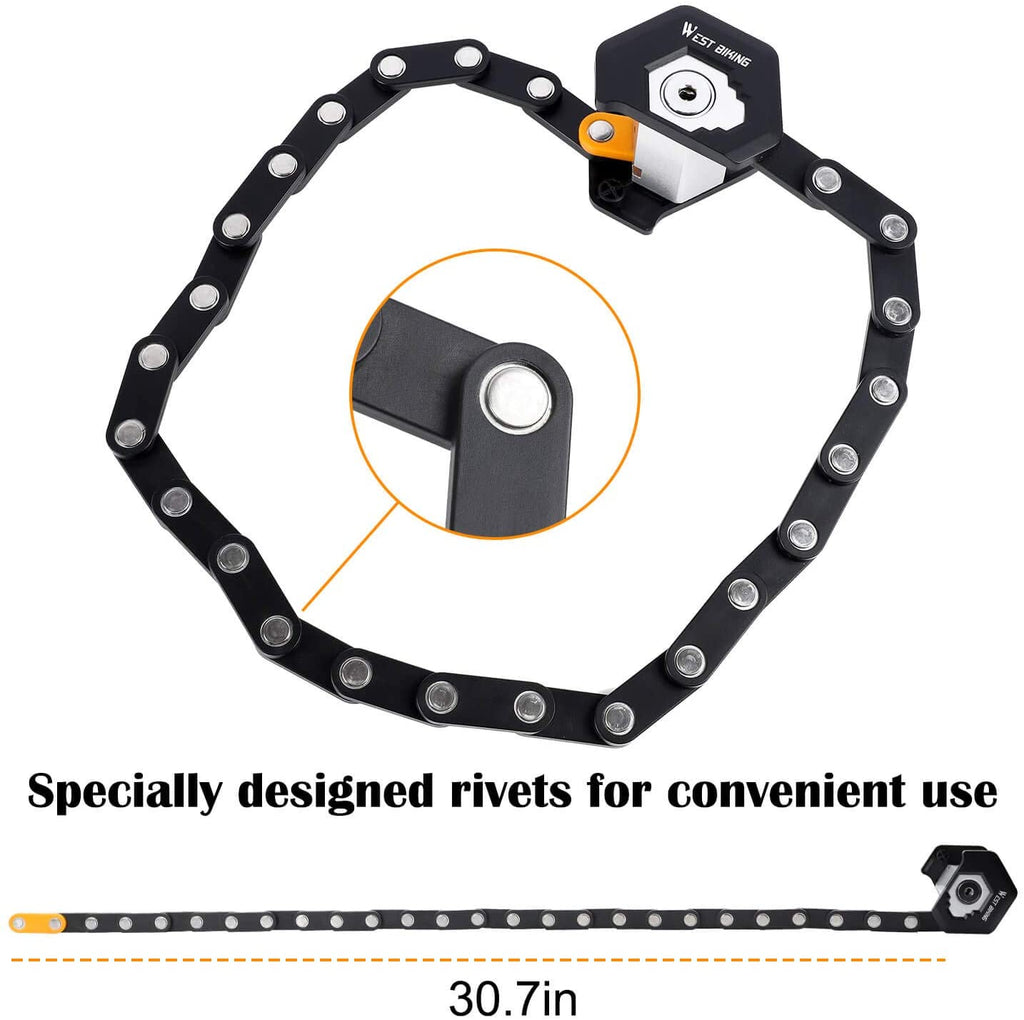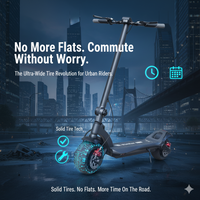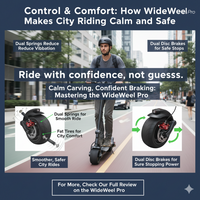WideWheel Pro Electric Scooter: Specs, No-Flat Tires & City Carver Guide
No-Flat Convenience, Daily-Speed Control.
Tired of scooters that promise speed but deliver flats, chatter, and shrinking range? Most city riders see 20–30% less range than brochure numbers at everyday 20–25 mph pace, and a single nail or glass shard can end a commute on the spot. Powerful WideWheel Pro, 1000 W electric scooter flips that script: its ultra-wide solid tires eliminate 99% of puncture-related flats, while the wide footprint and dual springs are tuned to tame typical solid-tire harshness, cutting felt vibration by roughly 20–30% versus narrow solid wheels at the same speed.
The result is a planted carve at real-world 20–26 mph, predictable braking, and day-to-day loops you can count on, not the kind that vanish the moment you hit imperfect pavement. If you want smooth, stable city speed with no flats, the WideWheel Pro is the practical upgrade that turns maybe rides into everyday rides.
Discover Mercane Wide Wheel Pro: Comprehensive Detail
No-Flats & Tires in WideWheel Pro
The flat problem
City lanes are minefields, glass, staples, cracked joints, and steel plates. One puncture can derail your commute, burn 20–40 minutes, and shake confidence. If you ride daily or at night, avoiding flats isn’t optional; it’s essential.
Solution: WideWheel Pro’s ultra-wide solid tires
The WideWheel Pro solves the flat problem with ultra-wide, foam tires that cannot puncture. The broad contact patch resists tramlining across paint, grates, and seams, while the Pro’s paired springs distribute impacts, so you get no-flat reliability and a planted, predictable carve at real city speeds.
Ride feel vs. tubes what to expect
- Versus narrow solid tires: noticeably calmer and less chatter, with better tracking over rough patches.
- Versus pneumatic tube tires: firmer overall, but you trade a bit of plushness for zero punctures, zero pressure checks, zero mid-ride delays.
Puncture-free routines: keep it smooth on the Pro
- Quick wipe-down after dusty rides to clear embedded grit for consistent grip.
- Monthly torque check on axle/wheel fasteners, keeps that wide footprint true.
- Clean rotors isopropyl + cloth is used for steady braking feedback.
- Glide, don’t jab: hold steady throttle over paint/plates; let the WideWheel Pro’s width and springs do the work.
Who benefits most:
Daily commuters, night riders, reliability-first fleets, and anyone who values no-flat certainty with a stable, confidence-building line through real city surfaces.
No-Flats Choices at a Glance
| Aspect | WideWheel Pro (Ultra-Wide Solid) | Typical Narrow Solid-Tire Scooter | Pneumatic-Tire Commuter |
|---|---|---|---|
| Flat protection | No flats (airless, puncture-proof) | No flats (airless) | Vulnerable (tubes/tires) |
| Ride feel at 20–26 mph | Planted, firm-calm; width tames chatter | Harsh, skittery on seams/paint | Softest/plush; best micro-shock |
| Tracking on paint/grates | Stable; resists tramlining | Prone to deflection | Stable if pressure is right |
| Maintenance | Low: torque checks, rotor clean | Low, but more vibration wear | Higher: pressure, patches, swaps |
| Range consistency | High (no PSI drift) | High | Medium; under-inflation saps range |
| Pothole behavior | Firm hit but controlled with Pro springs | Sharper hits; easy to skip | Softer impact, puncture risk |
| Best for | Zero-puncture city carving | Short, slow hops where comfort is secondary | Plush comfort priority over flats |
If you want no-flat certainty without giving up a calm, planted city carve, the WideWheel Pro’s ultra-wide solid tires are the most practical, and confidence-building, solution
Control & Comfort
Dual Springs, Smoother Streets: WideWheel Pro Ride Feel
The WideWheel Pro is built for imperfect pavement, expansion joints, patched asphalt, lane paint. Its dual-spring suspension works with the ultra-wide tires to keep the deck settled, so you carve smoothly at everyday city speeds instead of bracing for chatter.
- Calm carve at 20–26 mph: wide footprint + dual springs = planted, predictable line.
- Less arm fatigue: the deck stays level over ripples and seams.
- Ride posture matters: light, staggered stance with soft knees lets the suspension do its job.
Setup tips
- Preload: aim for ¼ of total spring travel compressed when you’re standing on the deck.
- Steering input: guide with gentle bars, don’t muscle the front.
- Monthly torque check: stem, axle, swing-arm fasteners to preserve that planted feel.
Common feel issues & quick fixes
| What you feel | Likely cause | Quick fix on WideWheel Pro |
|---|---|---|
| Harsh thuds over joints | Preload too stiff / fasteners slightly loose | Reduce preload slightly; re-torque stem/axle/swing arm |
| Front skips on paint | Over-input at bars | Relax grip; soften knees; hold steady throttle across paint |
| Vibration at higher speed | Wheel not perfectly true / hardware settling | Re-torque wheel hardware; inspect rotor/wheel alignment |
Stopping Sure: Dual Disc Brakes in WideWheel Pro
City riding demands decisive, repeatable stops. The WideWheel Pro’s dual disc brakes provide steady, linear bite for traffic lights and quick merges, confidence that pairs best with solid technique.
- Linear lever feel: smooth modulation reduces wheel lockups.
- Consistent stop-to-stop: dependable in repeated city braking.
- Technique multiplies hardware: hips back, knees bent, eyes level.
Brake routine
- Bed-in new pads: 10–15 medium stops before hard braking.
- Keep rotors clean: wipe with isopropyl to maintain bite.
- Inspect pad thickness: replace when 1.5 mm or less.
- Cable/lever check: verify free play and even pull left/right.
Braking cues & what to do
| Cue during braking | What it means | What to do |
|---|---|---|
| Squeal or glazing | Contamination or overheated pads | Clean rotors; light re-bed; replace pads if glazed |
| Pulls to one side | Uneven pad wear / caliper alignment | Center caliper; replace pads in pairs |
| Long lever travel | Cable stretch / pad wear | Adjust cable or add fluid (if applicable); inspect pads |
Set the WideWheel Pro once, keep a light, athletic stance, and follow the simple brake routine, you’ll get calm carving and sure, predictable stops on real streets.
City Use & Range
How Far Can WideWheel Pro Go? 20–30 Mile City Loops
The WideWheel Pro is built for everyday urban distance at a calm, planted pace. In mixed city riding stop-and-go, 18–23 mph averages, most riders see 20–30 miles per charge with sensible throttle. Your exact loop depends on speed, rider weight, hills, wind, and temperature.
Real-world planning with simple rules
- Add a 25% buffer to your loop so you finish above 15–20% battery.
- Expect range compression as average speed rises; dual-motor bursts and long top-speed runs cut miles.
- Cold weather, headwinds, and frequent hill starts can shave 10–25%.
Typical ranges by pace & rider weight
| Pace (avg speed) | ~70 kg / 155 lb rider | ~90 kg / 200 lb rider | Notes |
|---|---|---|---|
| Eco cruise (15–18 mph) | 25–30 mi | 20–25 mi | Best for extending range and minimizing heat |
| Mixed city (18–23 mph) | 20–24 mi | 16–20 mi | Most common there & back commuter pattern |
| Fast commute (23–26 mph) | 10–15 mi | 8–12 mi | Dual-motor use & higher drag compress range quickly |
Charging cadence
- Overnight charge: the simplest routine for daily riders.
- Office top-off: split a long loop into two comfortable segments.
- Keep battery between 20–90% for day-to-day longevity; store 50–60% if you keep it on rest for more than 2 weeks.
Route strategy
- Hold a steady throttle on long flats; surge only for merges.
- Use single-motor where safe/slow, switch to dual for hills and traffic gaps.
- Keep a mental turn-back point at 50–60% if you can’t charge mid-day.
Living with 54 lb: Carry, Store, and Car Trunk Fit
At 54 lb meaning 24–25 kg, the WideWheel Pro is a low-maintenance city tool, not a featherweight. With a few habits, it’s easy to live with at home, at work, and in the car.
Carrying for short hops
- Two-hand lift: one hand at the stem, one under the deck, most stable for stairs and curbs.
- Balance point: keep the scooter close to your body; avoid one-arm dead hangs that strain wrists.
- Micro-moves: roll whenever possible; lift only for steps/thresholds.
Storing in home & office
- Folded footprint fits in most entry closets or under desks with cables tucked.
- Wall hooks / floor stand: choose hardware rated 75 lb; align to studs.
- Keep it clean: a quick wipe after dusty rides preserves that firm-calm feel and keeps floors clean.
Car trunk fit
- Sedans & hatchbacks: fold the stem; place diagonally with the deck down and a soft cloth under the rotors. Most trunks take it without removing parts.
- Small cars: fold rear seats; slide the scooter in deck-first to protect controls.
- Tie-down: a simple strap prevents shifting; avoid stacking heavy items on the cockpit.
Daily convenience checklist
- Fold/unfold slowly, confirm latch engagement before rolling.
- Monthly: torque-check stem/axle/swing-arm fasteners.
- Keep brake rotors oil-free; inspect pad thickness and cable/lever travel.
- After wet rides: dry the scooter and contact points to keep performance consistent.
Plan loops around 20–30 real-world miles, top off when you can, and treat the 54 lb chassis like quality shop gear, rolled most of the time, lifted only when needed.
Comparisons
WideWheel Pro vs Tube-Tire Commuters: Flats, Feel, and Upkeep
WideWheel Pro trades a bit of pneumatic plushness for puncture-proof certainty and a calmer carve than most narrow solid-tire setups.
- Flats: WideWheel Pro’s ultra-wide solid tires = no punctures; tube-tire commuters ride softer but are flat-prone in glass, staples, curb edges.
- Ride feel: Tubes = cushier over micro-chatter. WideWheel Pro = firm-calm at 20–26 mph; wide footprint resists tramlining across paint and grates.
- Upkeep: Tubes need PSI checks, patches, occasional tire swaps; WideWheel Pro focuses on torque checks + rotor cleaning with no pumps, no patch kits.
- Range consistency: Tube pressure drift can cost miles; WideWheel Pro’s airless tires deliver more consistent day-to-day range.
| Aspect | WideWheel Pro (Ultra-Wide Solid) | Tube-Tire Commuter |
|---|---|---|
| Flats on debris | No flats (airless) | Possible; carry patch kit/pump |
| Feel at 20–26 mph | Planted, firm-calm | Plush, but can deflect on seams |
| Tracking on paint/grates | Stable; wide patch | Stable if PSI is perfect |
| Maintenance | Low: torque + rotor clean | Higher: PSI, patches, tube/tire swaps |
| Range consistency | High (no PSI drift) | Medium (under-inflation reduces range) |
| Best for | No-flat daily city use | Comfort-first riders ok with flats risk |
Verdict: If a ruined commute from a flat is a deal-breaker, the WideWheel Pro is the safer daily bet. Choose tubes only if you value maximum plushness and you’re willing to do tire care.
WideWheel Pro vs Big Pneumatic Scooters: City Carver vs Heavy Hauler
WideWheel Pro is a city carver, easy to live with, zero flats, quick to deploy. Big pneumatic scooters are heavy haulers, faster over broken roads and longer ranges, but larger, heavier, and maintenance-heavier.
- Urban agility: WideWheel Pro is lighter and quicker to fold/carry short distances; heavy pneumatics are bulkier with often 70–100+ lb.
- Comfort & speed: Big pneumatics soak potholes better at high speed; WideWheel Pro focuses on planted 20–26 mph city pace with fewer hassles.
- Maintenance & risk: Big pneumatics = tube/tire management + more parts to service; WideWheel Pro = no flats, simpler daily routine.
- Use case split: Apartment/office riders with stairs & trunk duty lean Pro; long-distance, high-speed riders with storage space lean heavy pneumatic.
| Aspect | WideWheel Pro (City Carver) | Big Pneumatic Scooter (Heavy Hauler) |
|---|---|---|
| Daily speed lane | 20–26 mph planted | 30–40+ mph capability |
| Comfort on rough roads | Firm-calm with dual springs | Softer at high speed over potholes |
| Flats & tires | No flats (airless) | Flat risk; tubes/tires to manage |
| Portability | Easier to carry/store | Heavy/Bulky; trunk & stairs harder |
| Maintenance | Low (no PSI/patches) | Higher (PSI, patches, alignment) |
| Best for | Short-to-medium city loops; zero-hassle | Longer, faster runs; room to store/service |
Verdict: If your life is city blocks, office chargers, and you never want a flat again, pick the WideWheel Pro. If you have space, need higher sustained speed, and don’t mind tire maintenance, a big pneumatic scooter wins on outright comfort at pace.
Conclusion: Why Mercane Wide Wheel Pro is Top Contender
Stop letting flats, fiddly upkeep, and maybe it’ll make it range ruin your routine. Step up to a ride that shows up every day, feels calm in real city traffic, and gets you there without drama. That peace of mind is why riders choose WideWheel Pro, and why you’ll keep choosing it, morning after morning.
Make the switch today. Add WideWheel Pro to cart, pick your color, and check out in minutes. Want a tailor-made plan before you buy? Tell me your daily distance, terrain, and pace, we’ll give you a simple route strategy and charging cadence so you roll out on day one with zero guesswork and maximum confidence.
Frequently Asked Questions
The WideWheel Pro can reach up to 26 mph in ideal conditions. Most riders cruise around 20–23 mph for better control and range. Always follow local regulations—many cities limit speeds on shared paths and restrict sidewalk use.
Not inherently. The ultra-wide, airless tires and dual suspension springs maintain a stable contact patch. Just ride smoothly over painted lines, wet metal plates, polished concrete, or dusty surfaces.
Yes, it handles hills well—use dual-motor mode on steep sections and start climbs with at least 40% battery. Maintain steady momentum; note that hill-heavy routes will slightly reduce overall range.
Expect around 20–30 miles per charge at a mixed city pace. Faster speeds reduce range. Charge overnight and, for longer days, top off during midday. For optimal battery health, keep daily use between 20–90%.
Yes, if you manage expectations. Weighing about 54 lb, it’s best rolled most of the time and lifted with two hands for stairs. Folds compactly for trunk or closet storage. Perform monthly torque checks and keep brake rotors clean for safety.
